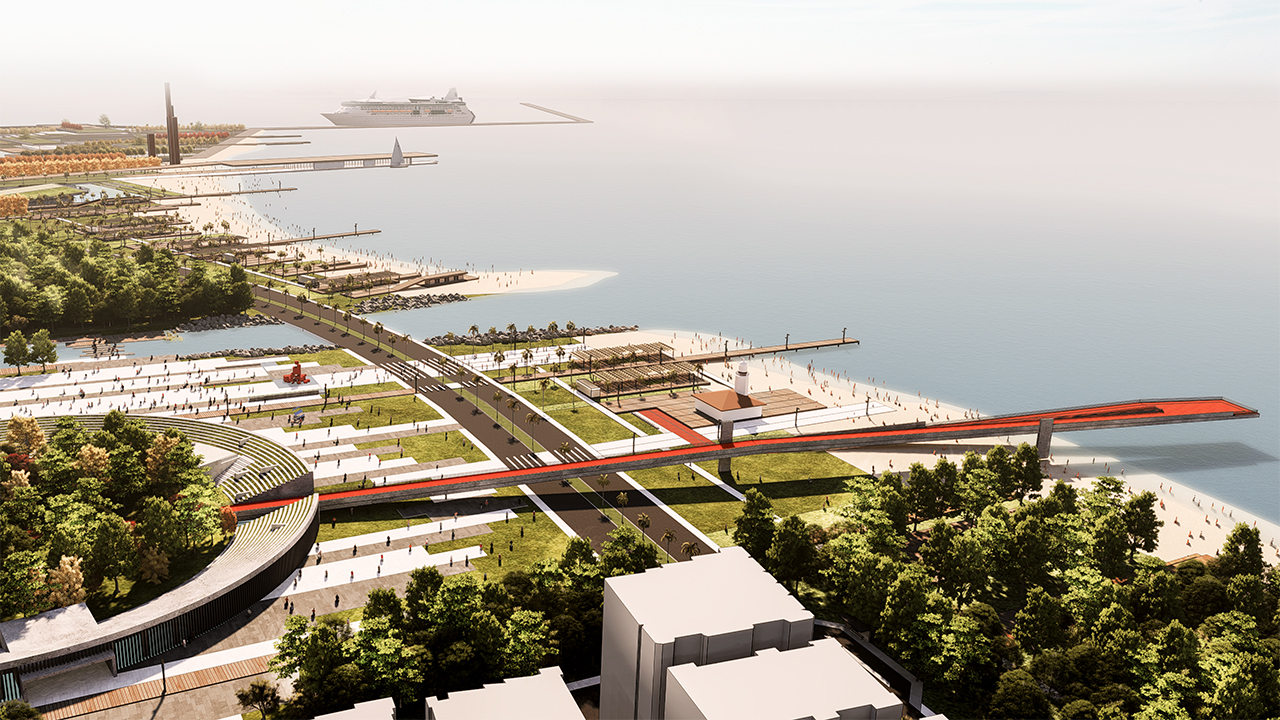












İzlek 33
Competition Project, Purchase Award
The designed project defines a new urban focal point that brings together the coastal strip and the area with structural density through newly planned tracks and formal/informal open spaces. Addressing the boundary between the coastline and residential areas as a major problem to be solved both for the entire city and the competition project, a proposed route is created along the coastal strip that can be implemented at various points throughout the city. This route acts as a light urban structure that allows pedestrians and cyclists to move seamlessly from the residential area to the coastline, considering accessibility for disabled individuals.
The most distinctive feature of the design is the stadium, which retains its place in urban memory while offering a transformable recreational area with prominent landscape spaces for the city dwellers. The stadium serves as a functional and visual support for the city dwellers' interaction with the sea and becomes a significant urban junction for public activities and spontaneous events. It is the central meeting point where all the proposed routes converge and disperse.
The proposed route, intersecting the stadium, leads from the coastline to several areas, including the stadium, the beach area, a 2nd-degree natural conservation site, Çamlıbel settlement, Çamlıbel Port, Republic Square, and the Coastal Park. It provides uninterrupted access to all regions for pedestrians while creating an experiential axis. The area with 2nd-degree natural conservation status is transformed into a recreational space with green areas and facilities. The existing ferry harbor is redesigned to include green areas, and a vertical monumental structure is proposed as a symbol welcoming the city's sea approach.
The landscape design's most significant element is the urban forest belt concentrated around the stadium. This area is thoughtfully planned to support climatic and visual comfort for open-air activities along the coastal strip. It enriches the city's biological diversity and provides natural recreational opportunities for users. This green space evolves towards the transformed stadium area, becoming an integral part of the functional transformation. Various plant species suitable for the warm climate of the region and with low water consumption and sufficient shading areas are included in the design. These species include tamarisk (Tamarix tetrandra), carob (Ceratonia siliqua), rubber trees (Ficus nitida, Ficus elastica), specific palm species (Phoenix theophrasti, Phoenix Canariensis), and the region's ancient tree, the olive tree (Olea europea).
